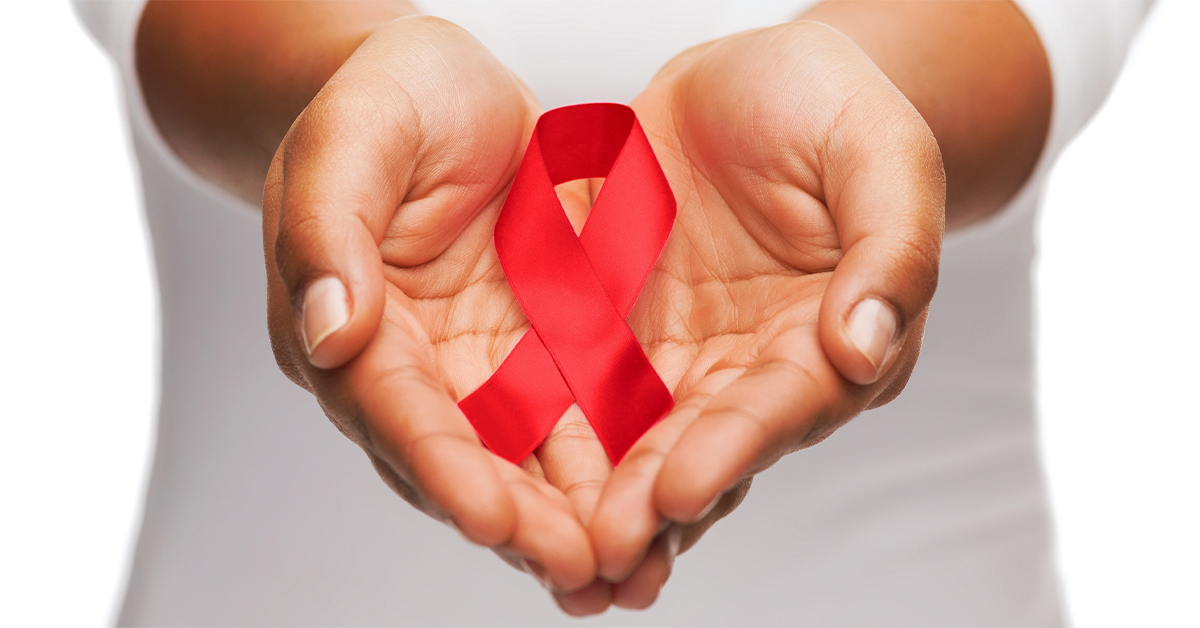December 1 is observed as World AIDS Day, which is dedicated to increasing awareness about AIDS and HIV. AIDS is a global pandemic that began in 1981 and has persisted as an international public health issue.
Since the pandemic began, an estimated 40 million people worldwide have died from AIDS. In addition, an estimated 37.7 million people are currently living with HIV. In the United States, an estimated 1.2 million people 13 and older are infected with HIV. About 13 percent — one out of seven— don’t know they’re infected and need to be tested.
HIV, or human immunodeficiency virus, is an infectious germ that attacks the body’s infection-fighting immune system. Specifically, it attacks and destroys a type of white blood cell called CD4 cells. These cells help coordinate the immune response to bacteria and viruses by stimulating other immune system cells to fight the germs.
When CD4 cells are compromised, the immune system doesn’t work properly. As a result, the person become susceptible to other illnesses called opportunistic infections. Without treatment, HIV gradually destroys the immune system and will progress to AIDS, acquired immunodeficiency syndrome.
HIV is spread through contact with certain body fluids of people infected with the virus. These body fluids include blood, semen, preseminal fluid, rectal fluids, vaginal fluids and breast milk. In most cases, HIV is spread by having unprotected anal or vaginal sex or by sharing drug equipment, such as syringes and needles, with an infected person.
The body can’t rid itself of HIV, and there’s cure for the infection. Once infected with HIV, a person has it for life.
Many people feel no symptoms during the first few months after infection and may not know that they’ve been infected. Others experience flu-like symptoms within two to four weeks after becoming infected with HIV. This time frame is considered Stage 1, or acute HIV infection.
Possible symptoms include fever, chills, rash, night sweats, muscle aches, sore throat, fatigue, swollen lymph nodes and mouth sores. Some people experience no symptoms and do not feel sick during this stage. As the disease progresses, symptoms may expand to include weight loss, diarrhea and cough.
Even with symptoms, the only way to know for sure if someone been infected with HIV is to get tested. There are several types of tests available from a doctor’s office, hospital or community health center. There are even HIV tests you can take at home.
If you suspect that you’ve been exposed, get tested.
Stage 2 is chronic, or asymptomatic. During this stage, the virus is still active but not reproducing as quickly. A person often has no symptoms during this stage but can still spread HIV to others. Without treatment, this stage can last for 10 years or more before progress to Stage 3, which is AIDS.
A diagnosis of AIDS is made if the CD4 count drops to less than 200 cells per cubic millimeter of blood. (A normal count ranges from 500 to 1,500.) AIDs may also be diagnosed if certain opportunistic infections develop. These include pneumocystis pneumonia, a lung infection; Kaposi sarcoma, a skin cancer; cytomegalovirus, which typically affects the eyes; tuberculosis, which mainly infects the lungs; and candidiasis, a fungal infection.
HIV is treated with a combination of medications known as antiretroviral therapy (ART). In most cases, ART suppresses the HIV so that it is undetectable in the blood. The amount of the virus in the blood is called the viral load. People with HIV that take ART as prescribed and get and keep an undetectable viral load can live long, healthy lives and will not spread HIV to uninfected partners through sex.
In the US, most people with HIV don’t develop AIDS because ART stops the progression of the disease. Although an AIDS diagnosis indicates severe damage to the immune system, ART can still help. Without treatment, however, people with AIDS typically survive about three years.
To help prevent HIV and AIDS, use a latex condom during vaginal, anal or oral sex, and never share needles to inject drugs.
There are other ways to prevent HIV, including preexposure prophylaxis (PrEP), a medication taken daily if at risk for infection. Postexposure prophylaxis (PEP) is medication taken within 72 hours of possible exposure to prevent the virus from taking hold.
If you do become infected with HIV, take your ART and visit your doctor as recommended. Remember; ART enables people with HIV to live healthy, productive lives. It also serves to prevent further spread, reducing the risk of onward transmission by 96 percent.





Leave a Reply